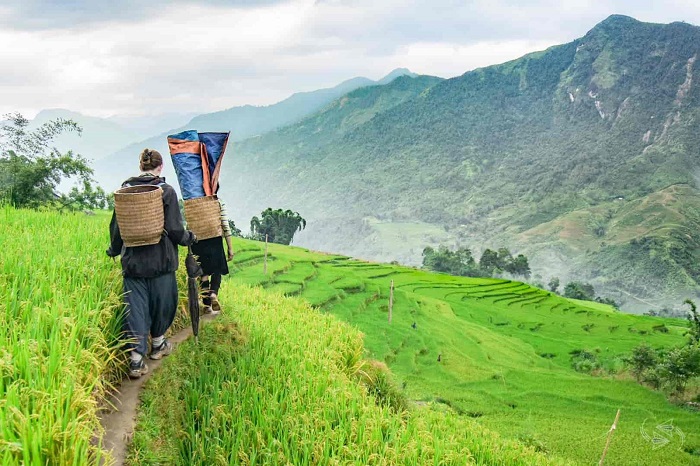
Top 9 hiking trails in Vietnam
- on Nov 9, 2023 By: Ngoc Nguyen
From rugged peaks to lush green valleys and jungles filled with abundant wildlife, hiking in Vietnam allows you to experience some of the most remarkable landscapes in Southeast Asia.
Presenting a range of challenges, hiking in Vietnam is suitable for everyone, from novice hikers to extreme enthusiasts; whatever the case, everyone will love the pristine landscapes presented by Vietnam's hiking trails. For those heading North, tours to Sapa from Hanoi are among the most popular hiking trails, offering travellers a glimpse of the hill tribes of the Northern regions and a favourable colder climate.
However, there is not just one place to find the best hiking in Vietnam; each destination offers something different, from rows of rice fields and soaring limestone mountains to mouth-watering cuisine, rich history, ancient villages and pristine coastline.
With over 2,000 miles of coastline, a 1,500-year history, and three major urban centres and traditions that will warm your heart, choosing to trek in Vietnam will be an experience you will never forget.
1. Top 9 Iconic Destinations for Trekking in Vietnam
Here is the compilation of the top 9 best destinations for hiking in Vietnam, curated by Authentik Vietnam.
Sapa

A verdant and vibrant Nordic paradise, Sapa is no secret. Sapa treks from Hanoi are extremely popular with those who want to extend the cultural scope of their Vietnam trip by spending a few days in the hills hiking in remote villages.
While Sapa is well travelled, there are still many routes and trails that make trekking in North Vietnam feel like it's still a secret. Depending on the length of your Sapa hike, you can choose from a wide range of routes, all varying in distance, difficulty and length.
One thing is certain on any Sapa trek in Vietnam, you will be greeted with spectacular mountain views, multi-tiered rice fields and a unique culture as you meet some of the Vietnamese ethnic minorities who inhabit these mountains.
Cat Tien National Park
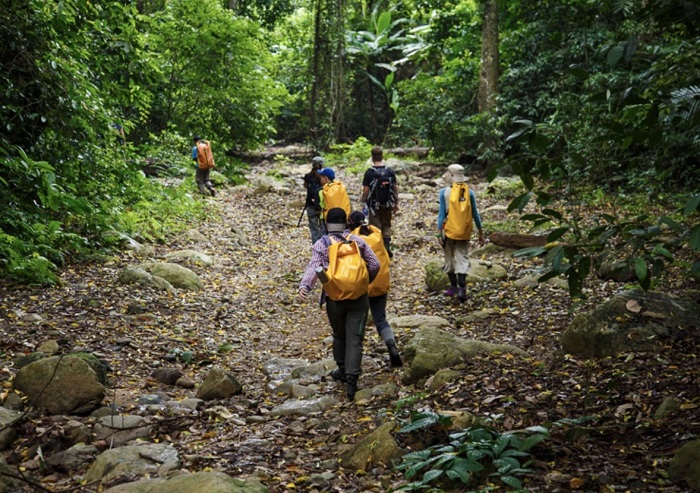
Home to 30 national parks protecting abundant wildlife and beautiful sea, coastal and inland landscapes, jungle trekking in Vietnam presents an array of opportunities. If you're looking to go trekking in Southern Vietnam, look no further than Cat Tien National Park, the country's biodiversity treasure trove.
From gibbons to wild boars and sambar deer, Cat Tien National Park allows visitors to see several endangered species in the wild. Just 160 kilometres from Ho Chi Minh City, Cat Tien is the perfect break from the hustle and bustle of the city. If you're not looking to spend several days trekking in Vietnam's jungles, Cat Tien allows you to immerse yourself in rare flora and fauna on an overnight trip from the southern metropolis.
With trails of varying distances, you'll be guided through the park's large ecosystem, passing ancient trees with exposed roots taller than you. You'll hope to spot rare gibbons, more than 400 species of butterflies and a number of the 79 species of reptiles that inhabit these lands.
Cao Bang – Alternative hike in northern Vietnam
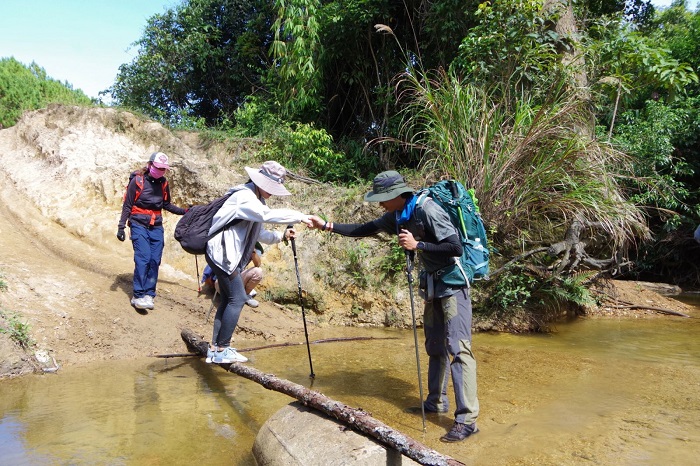
One of the greatest destinations for hiking in Vietnam, Cao Bang's karst mountain landscapes, deep gorges, multi-tiered rice fields and stunning waterfalls form the perfect backdrop for any adventure.
Located on the Chinese border in the depths of Northern Vietnam, Cao Bang province is home to Ban Gioc Waterfall which is one of the most scenic hikes in the country. Known as one of the most majestic waterfalls in Southeast Asia, Ban Gioc can be reached in less than a day on a short hike in northern Vietnam.
Dalat

Perched 1,500 metres above sea level in Vietnam's south-central region, Dalat was a French colonial resort town that flourished into a city beloved by locals and expats alike. If you are looking for the beautiful karst landscapes and endless beaches of Vietnam, then Dalat is not the place for you. However, what you will find there is a cool, refreshing climate, rushing waterfalls, thriving local culture, and endless hiking trails.
For those who love adventure, Dalat in Vietnam is your playground; hiking, climbing, camping, caving and more are offered. From its history as a colonial city, Dalat has retained its little “touch of Europe”, which makes it a wonderful place to spend a few days.
Those interested in trekking in Vietnam's Central Highlands will want to head just outside central Dalat to Lang Biang Mountain, a symbol of the city. The gentle hiking trail, perfect for beginners, takes about four hours. At the top, you will be rewarded with views of the city of Dalat from a height of 2,167 metres.
Ha Giang

Much more than a day trip from Hanoi to Sapa, the Northern province of Ha Giang is equidistant from the Northern capital but offers a different experience from its more popular counterpart. As the country's northernmost province before touching China, Ha Giang is sometimes called "Vietnam's last frontier."
Ha Giang is known for its panoramic views, karst mountains, colourful ethnic minorities and, in spring, its carpet of blooming flowers. While its deep valleys and high peaks are impressive, trekking in Ha Giang is more for those looking for shorter routes. Several trails run through the valleys, along the mountains from one isolated village to another. However, the views at every turn are quite formidable.
One of the mountain passes – Ma Pi Leng – offers panoramic views of limestone peaks, deep canyons and mountain ranges stretching as far as the eye can see, dotted with lush green fields and occasional habitations.
For those looking to “get off the beaten track,” Ha Giang is the place. Wandering the gentle paths between villages housing ethnic minorities, you never know what you might find; buffaloes grazing, ladies weaving baskets and children excited at the sight of “foreigners”.
Pu Luong Nature Reserve

From a starting point like Hanoi, trekking opportunities are abundant in Northern Vietnam. If you're not looking to spend your entire trip hiking in Northern Vietnam, then the nature reserves scattered beyond the capital offer the perfect opportunity.
Just under 100 miles from Hanoi, Pu Luong Nature Reserve is home to two mountain ranges facing each other with a valley in between. In the valley, you will find lush green rice terraces, limestone hills and forests. Covering an area of nearly 18,000 hectares, Pu Luong is the largest nature reserve in Northern Vietnam.
Best explored on an overnight trek, you'll encounter stunning waterfalls, endless rice terraces, mountain landscapes and ethnic communities. If you're looking for a greater challenge, you can hike the 1,700m Phu Luong Mountain.
Bach Ma – Hue

The beauty of Central Vietnam cannot be disputed. Stretched mountain ranges, incredible coastal landscapes, beautiful waterfalls and abundant wildlife await you on your trek in central Vietnam. Bach Ma National Park in Hue is no exception.
Situated 1,450 metres above sea level, Bach Ma National Park was first discovered by a French architect in 1932 and was later transformed into a luxury French retreat beloved for its cooler climate. Inside the national park is a vast ecosystem filled with over 2,000 species of plants and over 1,500 species of animals.
There are three major hiking routes in Bach Ma National Park, the most popular is the 1,420m Hai Cong Dai Mountain - the highest point in the park. The road to the top of the mountain is 16 kilometres long and takes approximately four to five hours. The challenging hike is truly rewarding as from the top you will be greeted with stunning views of the entire Bach Ma range, Truc Lam Temple and Truoi Lake.
Phong Nha-Ke Bang National Park
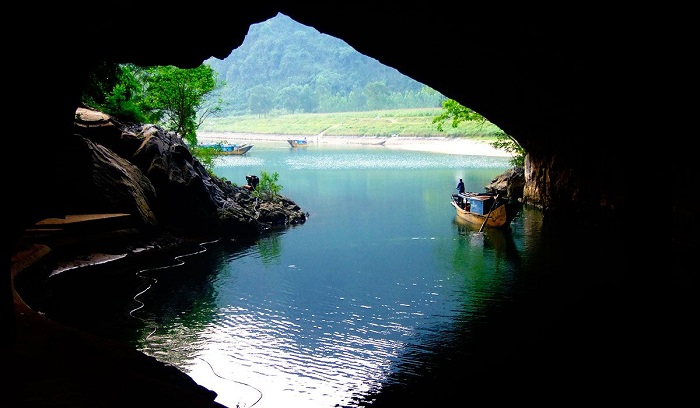
Designated as a UNESCO World Heritage Site in 2003, Phong Nha – Ke Bang National Park (Phong Nha for short) is one of Vietnam's most unique national parks. Home to the world's largest cave, Son Doong, and over 103 km of underground rivers and caves, Phong Nha is a remarkable place for trekking.
Trekking national parks in Vietnam offer an array of different challenges and routes, as does Phong Nha. One of the most popular day hikes goes through Paradise Cave, which takes you on a 4.2-mile hike deep into the cave before turning around. Several night hikes take you deeper into Phong Nha's fascinating karst mountain landscape, deep into the jungle and through caves. You will spend your breaks cooling off in waterfalls and underground rivers.
Those with a little money and free time would favour the four-day Son Doong Cave trek, the cave with a cavern so large that a Boeing 747 could pass through it.
Trekking Fansipan, the highest mountain in Vietnam

Known as the “Roof of Indochina,” Fansipan Mountain is the highest peak in Vietnam at a staggering height of 3,143 metres. Located in the mountainous northern province of Sapa, you can reach the start of the various trails leading to Fansipan Peak by night train from Hanoi.
As the pride of residents, when hiking Fansipan Mountain, you can expect to encounter serene gardens, beautiful pagodas, and friendly locals walking up or down the mountain. From the top, the views are captivating but don't expect to be alone up there. With cable car access and various "easier" routes, Fansipan Mountain sees around 1,000 hikers each day.
There are three routes to reach the summit, each varying in length and difficulty. The easiest route is by Tram Ton which allows you to return on the same trail, taking a total of three days to go up and down the mountain.
2. How to prepare for your hike in Vietnam
+ Consider the following preparatory steps to ensure you experience the best trekking in Vietnam.
+ Think about where you want to go and try not to cram too many places into one trip, as you might spend most of your trip travelling.
+ Be prepared for the mental and physical challenge that comes with trekking.
+ Strongly consider hiring a guide for a more authentic and informed experience.
+ Hire porters for more difficult routes so you can enjoy the hike.
+ Make sure you have comfortable shoes that you break in before the trek.
3. When to hike in Vietnam
It almost goes without saying, but before embarking on a trekking trip, it is important to check the weather and be prepared for any eventuality. Vietnam experiences radically different climates in different regions at the same time of year.
With this in mind, it is important to plan your trip to ensure it coincides with the best possible hiking season for your chosen destination.
Best time to trek in Northern Vietnam
The most ideal time for trekking in Northern Vietnam is from late September to October. After the rainy season, the landscape is perfect and the climate is pleasantly cool. Later in the year, temperatures can drop, so keep that in mind.
Best time to trek in Southern Vietnam
Unlike the North, the South of Vietnam experiences a pleasantly warm climate all year round. However, you should aim to avoid high summer (March to May) and the rainy season (June to November). The best time to trek in Southern Vietnam is the shoulder season when the weather is cooler and the rain holds off.
Best time to trek in Central Vietnam
During its rainy season, Central Vietnam is frequented by large storms and typhoons. To avoid these harsh trekking conditions, travellers should avoid Central Vietnam between August and November. The months of November through February can be a bit cool and humid, but in March, the weather changes and you have a few months of optimal hiking conditions before the heat becomes unbearable in June and August.
Related articles:
>> Famous hills, peaks and mountains of Vietnam
>> Top 10 adventure activities in Vietnam
>> Top 15 most thrilling adventures in Vietnam
>> Tour in the Northwest of Vietnam : Where to go? Which itinerary? What to do? How many days?
 Español
Español Français
Français






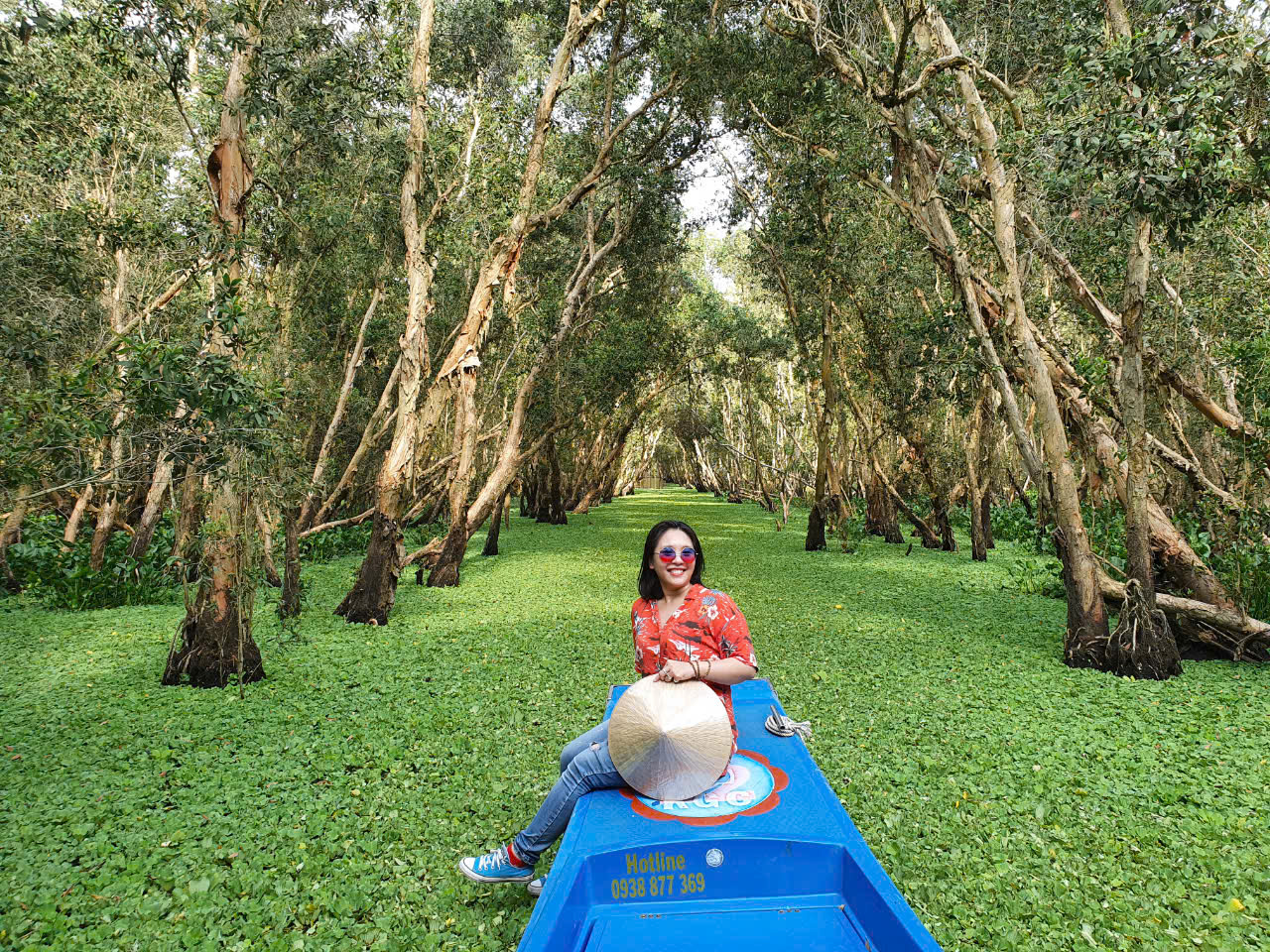
.jpg)
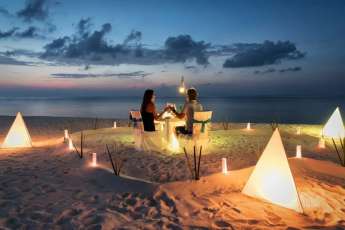
.jpg)
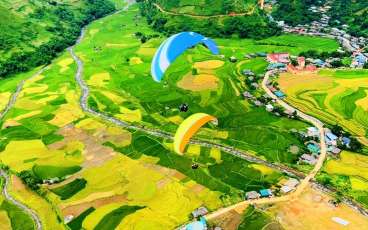









Morgane Ter Cock
on Dec 18, 2025HerbertPhomaMS
on Oct 19, 2025Lilyan Cuttler
on Oct 15, 2025Avenue17XC
on Sep 14, 2025Avenue18JL
on Jul 21, 2025